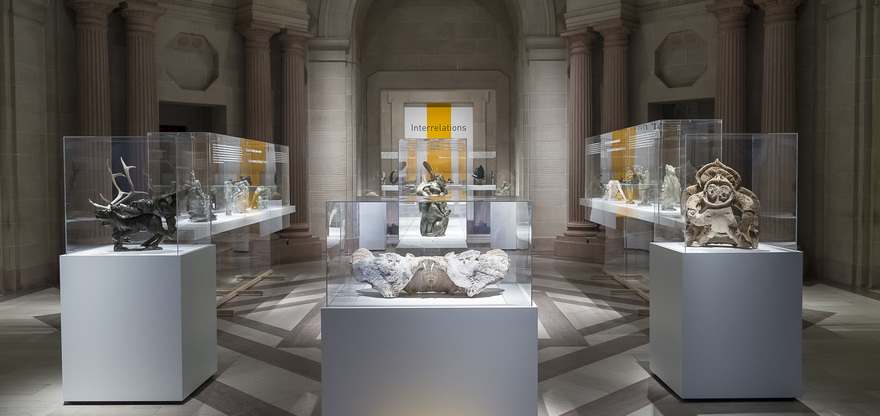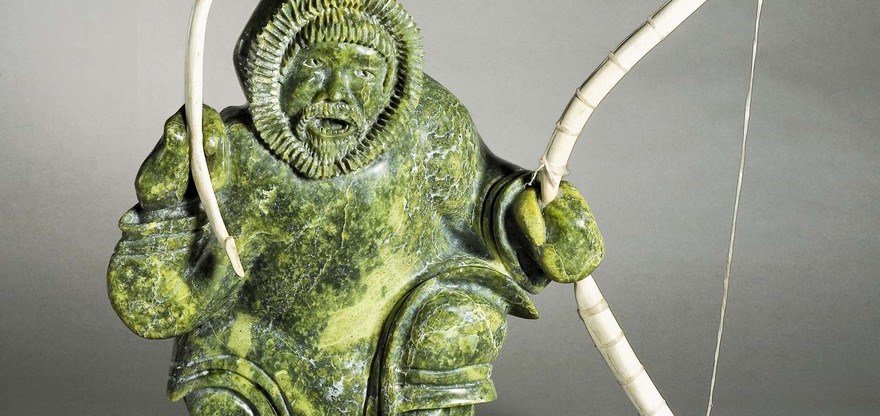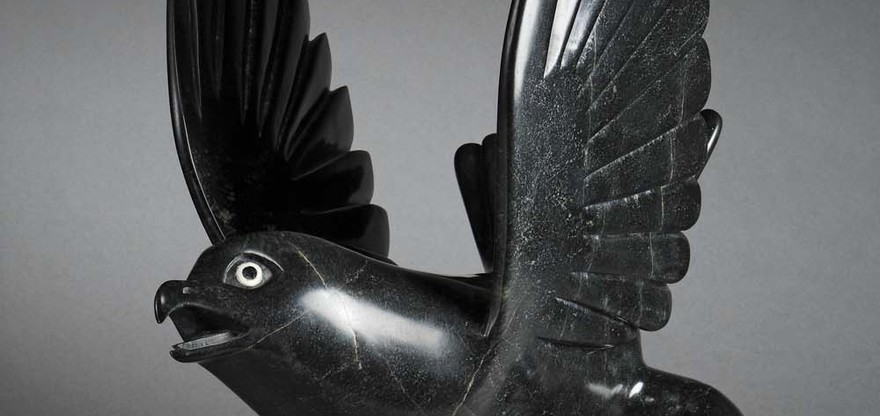The Musée national des beaux-arts du Québec acquired the Brousseau Inuit art collection in 2005 with financial assistance from Hydro-Québec and thanks to the generosity of the visionary Québec City collector Raymond Brousseau.
The collection is made up of 2,635 pieces, including more than 2,100 sculptures, from every region of Nunavut and of Nunavik. The 22 pieces on display in this space are a token of the wealth and diversity of this remarkable collection.
The works in this exhibit showing in the Gérard-Morisset Pavillion's Rotunda reflect the deep interrelation of humans and wildlife in the Arctic over thousands of years.
Inuit artists are well known for their ability to capture the spirit of an animal in stone, ivory and bone; this understanding of Arctic wildlife is rooted in their intimate knowledge of the land and the respectful relationship they have with animals of the northern sea, sky and tundra. For millennia, Inuit survival depended on their ability to responsibly harvest whales, seals, caribou and other Arctic wildlife, which provided not only food but also oil for lamps and skins for warm and waterproof clothing. While the Arctic has modernized over the last century, Inuit still rely on the traditional knowledge passed down through generations to closely observe animal migrations, ocean life, and even weather patterns. This intimate knowledge of their ecosystem enables them to provide for their families by continuing to harvest healthy “country food” (sustainable local Arctic food sources such as caribou, seal, blueberries, fish and fowl). Furthermore, many Inuit now also apply the considerable powers of observation and practiced patience honed through hunting to the creation of artwork depicting the wildlife with which they share their vast polar territory.






Give us your feedback